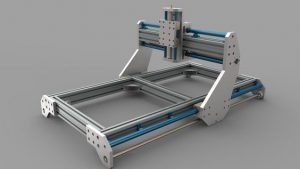Pin Gauges in QC Precision Mechanical Processing
Precision mechanical processing demands the highest levels of accuracy and consistency to ensure the production of high-quality parts and components. Central to achieving these standards is the rigorous quality control (QC) process, which relies heavily on specialized measuring tools like pin gauges. In this article, we delve into the indispensable role of pin gauges in QC within the realm of precision mechanical processing.
What Are Pin Gauges?
Pin gauges are cylindrical tools typically made from high-grade tool steel. They are precisely manufactured to specific diameters and are available in a wide range of sizes, often varying by increments as small as 0.001 mm. Their design allows for accurate and repeatable measurements, making them invaluable in QC applications.
How to Use Pin Gauges in QC?
Preparing the Pin Gauges
- Selecting the Pin Gauges: Choose a pin gauge with the diameter and length suitable for the hole or slot you need to check.
- Checking the Pin Gauges: Use a micrometer or caliper to measure the diameter of the pin gauge and ensure it remains within the acceptable limits of the standard.
Preparing the Part to Be Checked
- Cleaning the Part: Clean the part using a cleaning solution and a small brush to remove dust, oil, or any residue.
- Inspecting the Part: Before checking, inspect the part to ensure there are no cracks, warping, or defects.
Using the Pin Gauges
- Placing the Pin Gauge: Carefully place the pin gauge into the hole or slot to be checked. Ensure the pin fits snugly in the hole or slot without applying force.
- Checking the Fit: Pull pin the gauge out of the hole or slot. If the gauge pin slides in too easily or too tightly, the part may not meet the standard.
Inspecting and Recording the Results
- Recording the Results: Record the result of the checking process, including the measured value and the allowable standard.
- Reviewing the Results: Compare the checking result with the allowable standard and determine whether the part meets the requirements.
Storing the Pin Gauges
- Cleaning the Pin Gauges: After use, wipe the pin gauges clean with a soft cloth and cleaning solution to remove oil and dust.
- Storing the pin gauges: Store pin gauges in a sealed storage box to avoid dust and moisture.
Periodic Inspection
- Regular Inspection: Perform regular inspections of the gauge pin to ensure it continues to meet the requirements and has not been deformed.
Types of Pin Gauges
Go/No-Go Gauges
The most common type of pin gauges are Go/No-Go. These sets consist of two pins: a Go pin and a No-Go pin. The Go pin has a diameter at the upper limit of the tolerance range, while the No-Go pin has a diameter at the lower limit. Components are inspected by testing their fit with these pins. If a component fits the Go pin but not the No-Go pin, it meets the specified tolerance.

Steel Pin Gauge
A steel pin gauge, also known as a pin gauge or plug gauge, is a precision measuring tool used to determine the diameter of holes. These gauges consist of a series of cylindrical pins of varying diameters, each labeled with its size. The pins are typically made from high-quality tool steel, which ensures accuracy and durability.
Here’s how you can use a steel pin gauge:
- Selecting the Gauge: Choose a pin gauge that you believe might fit into the hole you want to measure. It should be slightly smaller than the hole’s diameter.
- Testing the Hole: Insert the selected pin into the hole. If the pin goes in easily and does not wobble, it indicates that the hole is slightly larger than the pin’s diameter. If the pin does not fit or fits tightly, the hole is smaller than the pin’s diameter.
- Finding the Right Fit: Continue trying larger or smaller pins until you find one that fits the hole perfectly without any play.

Tapered Pin Gauges
Tapered pin gauge is specialized measuring instruments designed to check the diameter and taper of tapered holes, slots, and grooves. Unlike standard pin gauge with a constant diameter, tapered pin gauge feature a gradual increase or decrease in diameter along the length of the pin. This unique design allows them to accurately measure tapered features, making them essential tools in industries that require precision and accuracy in dimensional inspection
Benefits of Using Pin Gauges
Accuracy
Pin gauge offer high precision, allowing for accurate measurement of small tolerances. This ensures that components are manufactured to the exact specifications required.
Durability
Made from hardened steel, pin gauge are resistant to wear and deformation, ensuring long-lasting performance and reliability.
Versatility
With a wide range of sizes and types available, pin gauge can be used for inspecting various types of holes, slots, and bores across different industries.
Cost-Effective
Investing in quality pin gauge can lead to cost savings in the long run by reducing scrap, rework, and warranty claims due to dimensional inaccuracies.
Pin gauges are essential tools for anyone involved in precision manufacturing and quality control. Their accuracy, durability, and versatility make them indispensable in ensuring that components meet the required dimensional specifications. Whether in the automotive, aerospace, medical, or general manufacturing sectors. As technology continues to advance, the demand for precise measurement tools like pin gauge will only continue to grow, solidifying their place as a cornerstone of modern manufacturing and inspection practices.

















